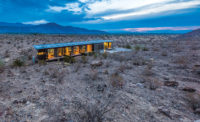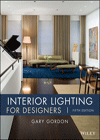Fussach, Austria
At the base of lake Constance, Within the picturesque Rhine Delta Nature Conservation Zone of southwestern Austria, a radiant, transparent pavilion celebrates the completion of a small but distinctive marina in the town of Fussach. A two-level, multifunctional event facility-cum-boathouse dubbed Nordwesthaus, the 2,067-square-foot structure appears to float on the edge of the moorings. A virtual beacon in its peaceful environs, it casts a shimmery reflection on the waterscape, and according to architect Dietmar Eberle, Nordwesthaus “is already an attraction for architecture tourists.”
Nearly a decade in the making, the Hafen Rohner (Rohner Port) is the result of a three-phase rehabilitation process that began in 1999. At that time, the owner, Maria Rohner, collaborated with the nearby Lochau office of Eberle’s firm, Baumschlager Eberle, to devise a plan that would transform the site of her family’s recently dismantled lakeside aggregate business to a more suitable enterprise for the idyllic wetland setting. Phase One, a yacht harbor along with a dramatically cantilevered single-story office building for Rohner created by the architects [RECORD, October 2001, page 140], made design waves when it was completed in 2000. Phase Two, a radical redesign of the shoreline, followed in 2005. Nordwesthaus, which is the culmination of the project, was realized in July 2008.
The ethereal yang to the cooler yin of its notable predecessor — a raised cast-concrete “tube,” dynamic in its horizontal linearity, with long, slotted windows on two sides and one fully glazed elevation fronting the lake — the new building is a crystalline rhomboid erected on landfill and supported by a base of piles beneath a concrete foundation. It rises approximately 45 feet from the water. And while the earlier office is a wood-lined concrete shell, Nordwesthaus comprises an amorphous, openwork concrete form enveloped by a glass box made of 5-by-10-foot double-glazed, float-glass panels framed in metal T-profiles and fixed to the structure with steel clips. Its textured exterior surface layer softens the sharp contrast of the solid concrete core and its translucent envelope.
“The purpose of these overlays is to allow light and shade to move around the inside,” Eberle explains. By day, sunlight interacts with the architecture, transforming the interior into a kaleidoscope of its surroundings. In the evening, the lighting creates an X-ray effect that reveals the building’s structural skeleton through the glass, producing a reedlike moiré pattern that evokes both water and flora.
“The rich light display was always important in making design decisions,” says Eberle. For that reason, he and project architect Christoph von Oefele worked with the Austria-based lighting manufacturers Ledon and Zumtobel to devise a scheme combining incandescent and LED sources. The solution not only illuminates the unique structure effectively in the landscape, but also provides the appropriate light levels and ambience required for a wide variety of functions, including business seminars, workshops, parties, private dinners, readings, and music recitals.
To accommodate the more utilitarian needs of the diverse programs, a series of halogen downlights was installed in the 29-foot-high concrete ceiling of the simply furnished main space. “These lamps introduce a certain light intensity that enables the participants of seminars to read texts,” says Eberle. Plus, he adds, they can be dimmed, which assures an aesthetically seamless integration with the more atmospheric LED system — the ultimate wow factor — composed of 116 LED spotlights developed by Ledon specifically for the project.
Embedded in discreet recesses around the perimeter of the concrete floor, each removable luminaire is made up of 12 integrated RGB (red/green/blue) LED modules that offer a vast range of more than 16 million colors. The composition of the luminaires allows for extremely subtle shade variations during any one of the Digital Multiplexing (DMX)—controlled sequences programmed to cycle through the entire color spectrum, from icy white tones to fiery reds, oranges, and yellows. Asymmetrical optics on the face of the fixtures distribute the light evenly to ensure that the amoebalike voids in the walls are fully illuminated, spreading the beams wide to the sides of the room, and to the outside — without the spotty, unpleasant glare sometimes associated with overly bright or exposed clusters of light-emitting diodes.
In terms of logistics, Eberle notes that there are no active heat sinks because the mass of the concrete structure in which the LED luminaires are installed keeps them cool, running smoothly at optimum outputs, and low-maintenance. Additionally, both the energy supply and DMX controls are easy to access on the lower ground floor, and the operation desk is conveniently situated at the bar located in the event space.
Beyond contributing to the building’s landmark status, the carefully considered lighting at Nordwesthaus seems to be good for business. Rohner reports that it highlights every event perfectly and provides impressive staging.
“The sequences loop every five minutes,” says Eberle, so that when they are activated, there is continual movement. “The overall effect is difficult to describe or even illustrate in photographs,” says the architect. Never harsh or sudden, the lighting generates a gentle vibrancy and aura that ultimately fuses with the architecture.





